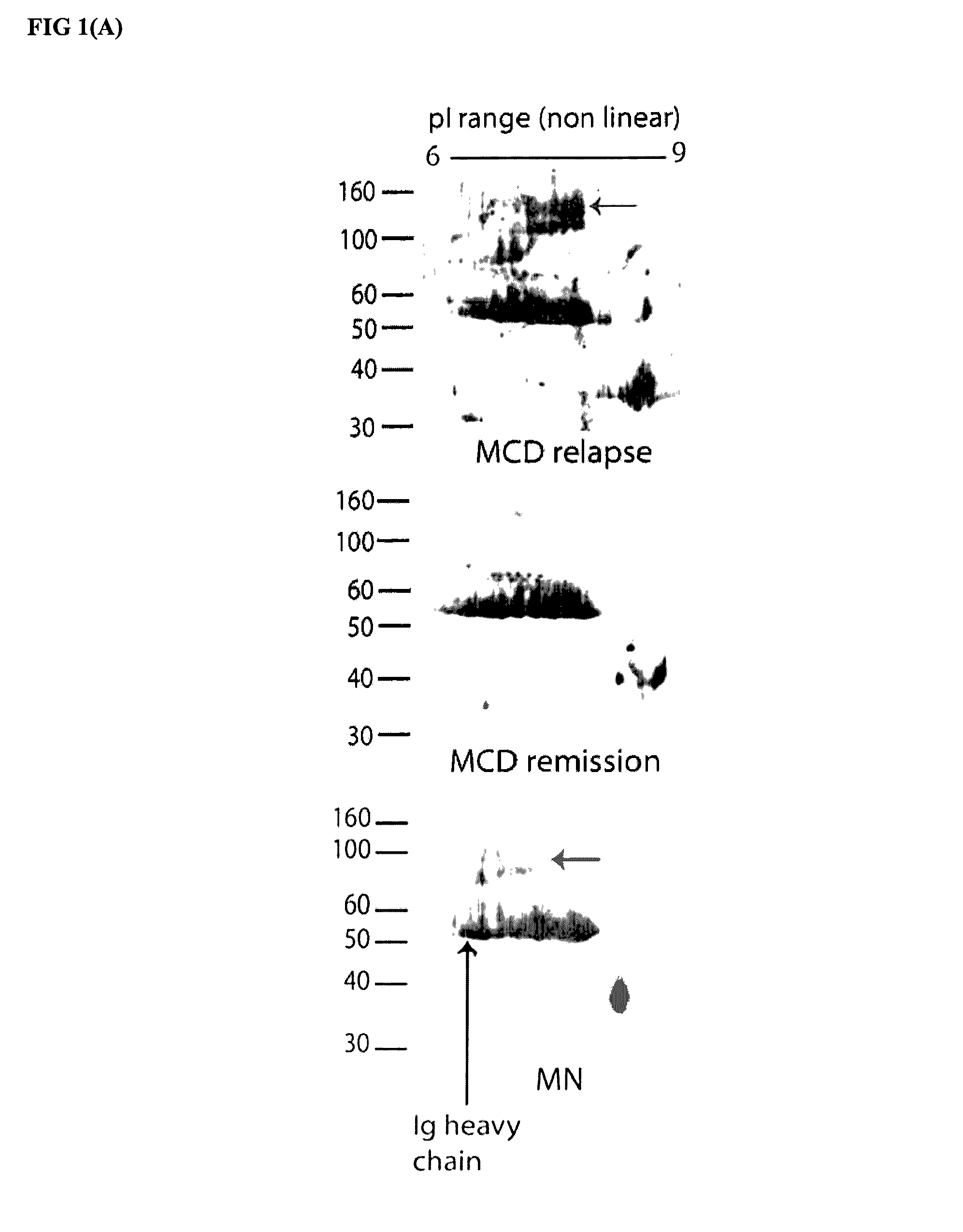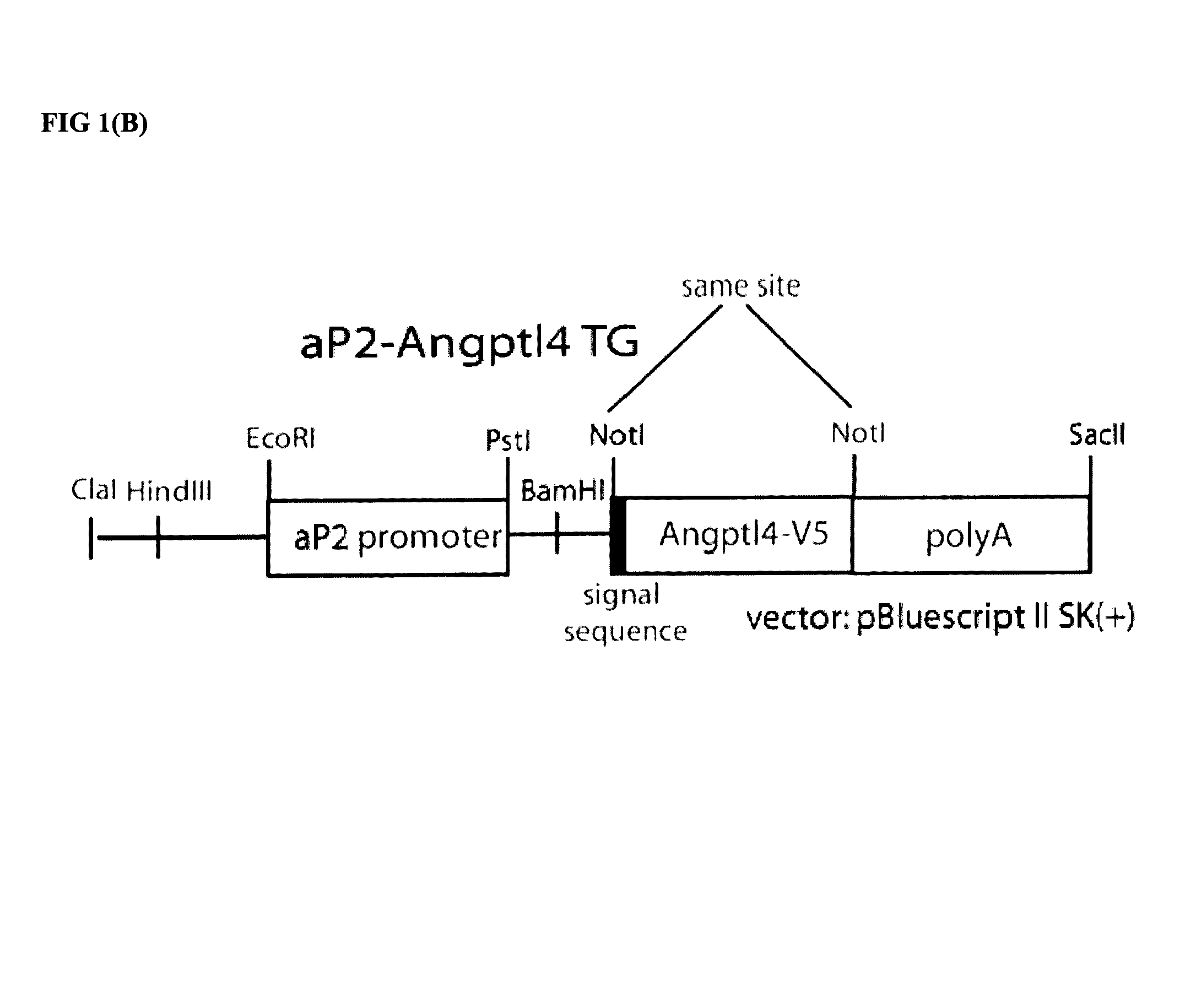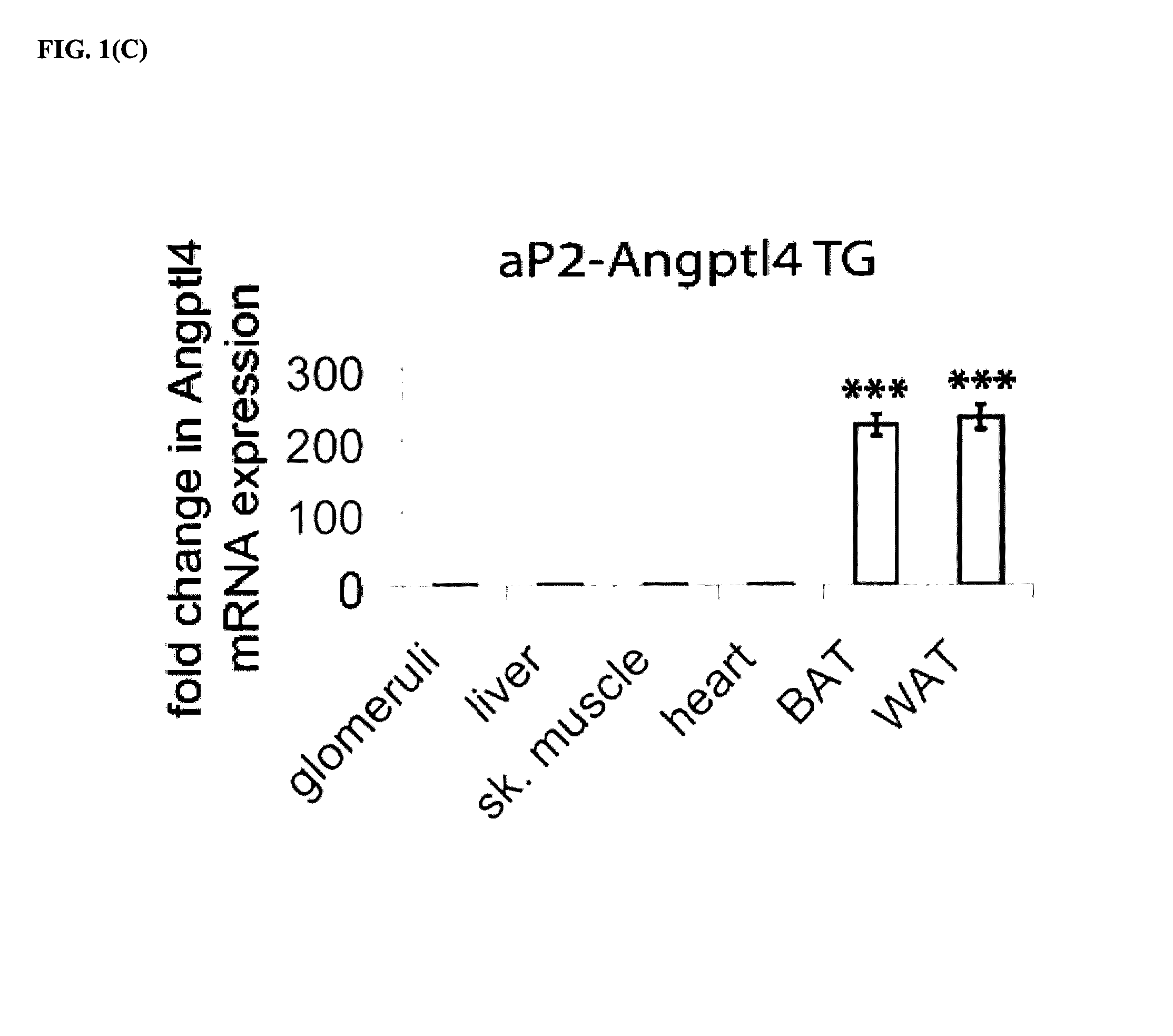Methods for treatment of nephrotic syndrome and related conditions
a nephrotic syndrome and treatment method technology, applied in the direction of peptide sources, angiogenin, metabolism disorders, etc., can solve the problems of edema, fatigue, and people often gain weight, so as to reduce edema, reduce proteinuria, and reduce circulating levels of plasma proteins
- Summary
- Abstract
- Description
- Claims
- Application Information
AI Technical Summary
Benefits of technology
Problems solved by technology
Method used
Image
Examples
Embodiment Construction
[0042]In the following discussion certain articles and methods will be described for background and introductory purposes. Nothing contained herein is to be construed as an “admission” of prior art. Applicant expressly reserves the right to demonstrate, where appropriate, that the articles and methods referenced herein do not constitute prior art under the applicable statutory provisions.
[0043]While investigating nephrotic syndrome, it was noted that Angptl4 secreted from podocytes induced proteinuria. More importantly, as described herein, circulating Angptl4 reduced the proteinuria in a transgenic animal model. Increased levels of Angptl 4 have been noted in nephrotic syndrome, such as MCD and MN, but increased circulating levels of Angptl4 have not been associated with causation of nephrotic syndrome.
[0044]While increased Angptl4 levels are shown to treat nephrotic syndrome and reduce associated proteinuria, increased Angptl4 in the circulation has been observed to induce hyperli...
PUM
| Property | Measurement | Unit |
|---|---|---|
| structure | aaaaa | aaaaa |
| concentration | aaaaa | aaaaa |
| swelling | aaaaa | aaaaa |
Abstract
Description
Claims
Application Information
 Login to View More
Login to View More - R&D
- Intellectual Property
- Life Sciences
- Materials
- Tech Scout
- Unparalleled Data Quality
- Higher Quality Content
- 60% Fewer Hallucinations
Browse by: Latest US Patents, China's latest patents, Technical Efficacy Thesaurus, Application Domain, Technology Topic, Popular Technical Reports.
© 2025 PatSnap. All rights reserved.Legal|Privacy policy|Modern Slavery Act Transparency Statement|Sitemap|About US| Contact US: help@patsnap.com



